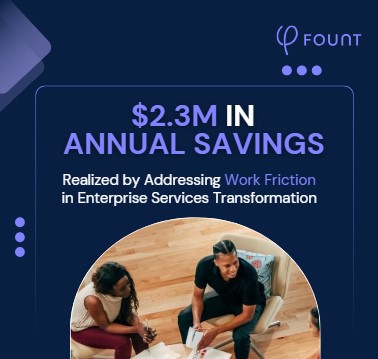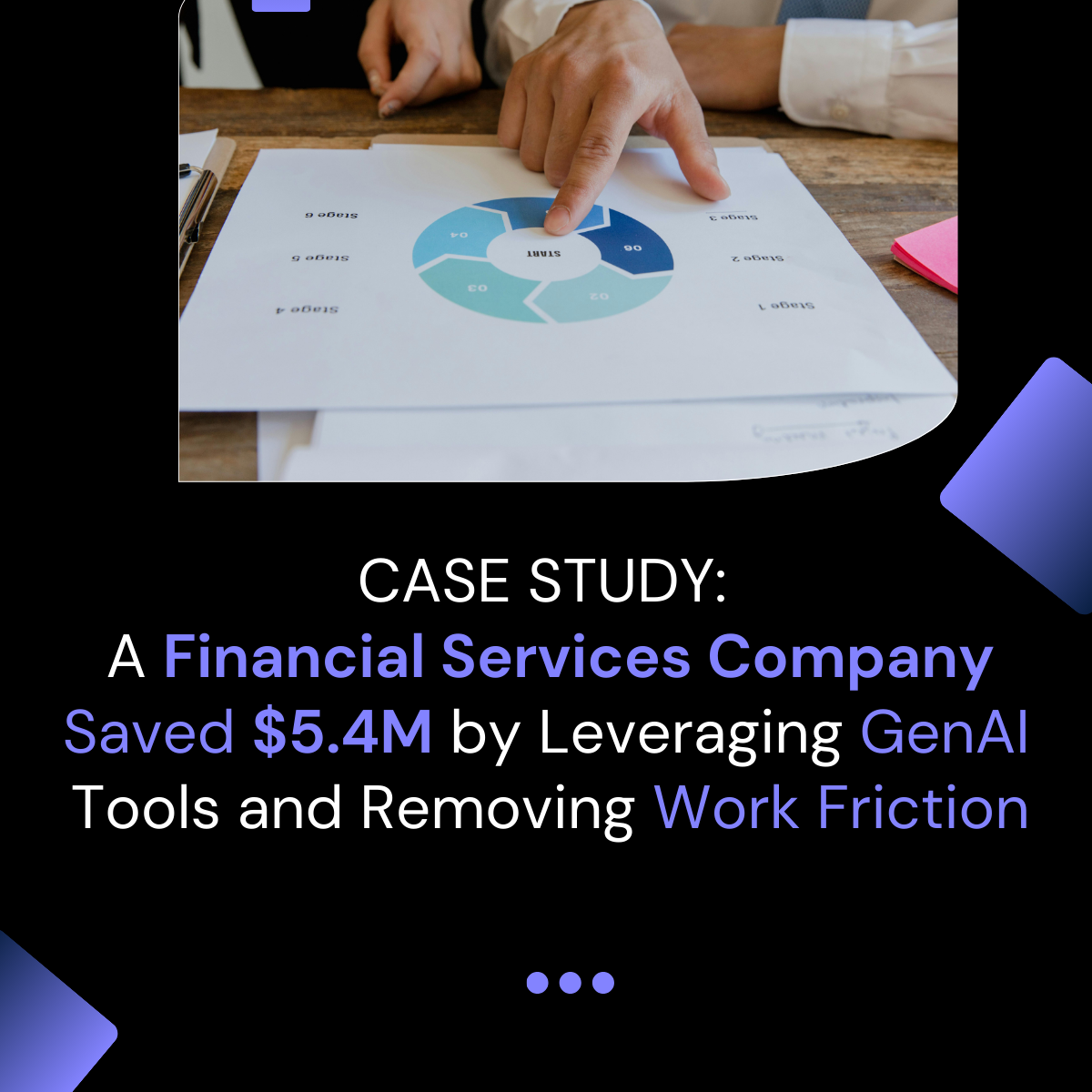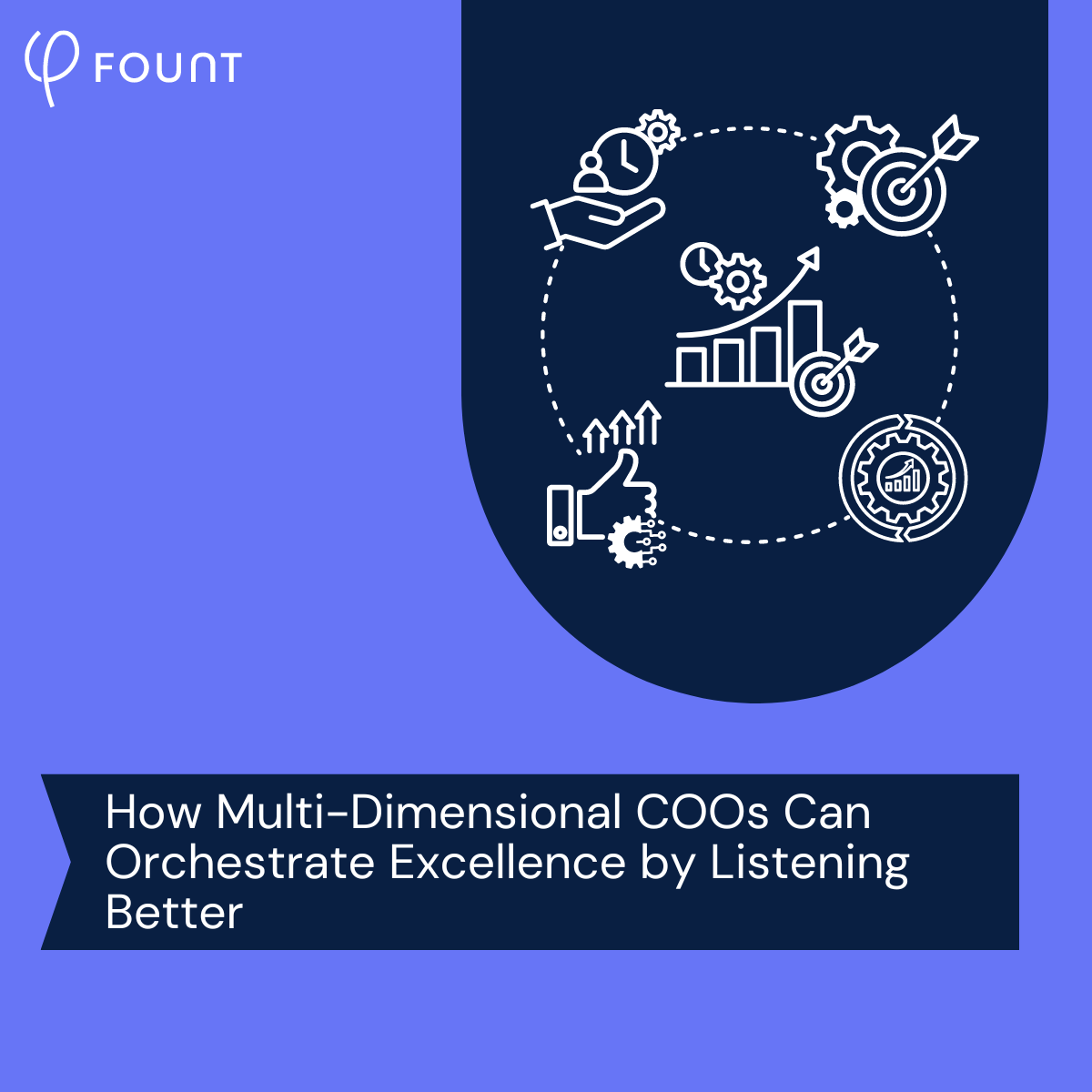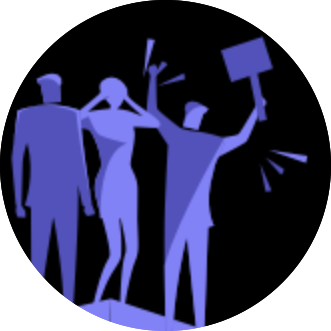PODCAST: Fix the environment, Not the People: Collecting Actionable Data to Mitigate Work Friction | Christophe Martel
In today’s modern employment, talking about making work satisfying and efficient is more important than ever.
In this episode of Work for Humans Podcast, Dart Lindsley and FOUNT’s Co-founder and CEO, Christophe Martel not only talks but also explores the essence of what makes or breaks the modern work environment.
This conversation challenges the conventional HR focus on people as the problem and instead shifts the narrative towards the systems that shape their work experience.
“It’s a jarring thing to say to an HR executive, what we’re solving for right now is not a people problem. We’re solving for a system problem, work environment problem. In HR, it’s great to be super focused on people but actually, why don’t we let go of that a little bit and try to understand the environment in which we put them and try to reduce the hill that they have to climb, when they work.”
The FOUNT’s mission is to measure and mitigate work friction through a data-driven approach. By collecting and analyzing first-hand employee experiences, FOUNT identifies the specific touchpoints and moments that contribute to work friction. This granular insight enables organizations to implement targeted interventions, streamlining processes, and removing unnecessary hurdles that employees encounter in their daily tasks.
You can listen to the full episode on Spotify. A transcript from the episode appears below.
Transcript
CM:
It’s a jarring thing to say to an HR executive, what we’re solving for right now is not a people problem. We’re solving for a system problem, work environment problem. And it was Edwards Deming, who said, put two perfectly great employee in a bad system, and the system will win every time is exactly that. In HR, it’s great to be super focused on people but actually, why don’t we let go of that a little bit and try to understand the environment in which we put them and try to reduce the hill that they have to climb, when they work. That’s very similar to actually what a good customer experience organizations have done, which is iteratively remove friction and effort for customers by getting to know more and more what their first-person experiences.
DL:
Welcome to the Work for Humans Podcast. This is Dart Lindsley. According to Gartner research work friction costs employees almost two hours of work a day. For a company with 10,000 employees that translates to a staggering loss of $78 million a year. Workplace friction costs companies time and money, but it’s also one of the most severe design flaws in the experience of work. It makes employees feel angry, disrespected, and hopeless. Our guest today Christophe Martel spent decades in leadership roles in customer facing functions across four continents. But when he became the Chief People Officer at CEB he was shocked to learn that HR lacks the kind of tools that are available to even the most primitive customer experience teams, and especially tools to research employee experience with enough detail to have any hope of identifying real solutions. Christophe is president and co-founder of TI people, a consulting firm dedicated to improving employee experience. He’s also the co-founder and CEO of FOUNT, a software startup with a mission to measure and mitigate work friction. In this episode, Christophe and I talk about how his career led him to co-found FOUNT, the data driven model behind his work, and how to measure first person experiences to solve large scale business problems. We also discussed the types of work friction, and their impact, the difference between work friction and organizational friction, who’s responsible for the most important employee experiences and other topics. If you enjoy this episode, of course, be sure to subscribe, wherever you listen to podcasts, to show your support. And now I bring you my conversation with Christophe Martel. Christophe Martel, welcome to work for humans.
CM:
Thank you. Glad to be here.
DL:
On this show, we often move into the highly theoretical. Today, we’re going to be talking about a very practical approach, I believe, to solving the challenge of work experience. And we’re going to be talking to you about FOUNT. And so, if you could tell the audience what FOUNT is and how you arrived at it.
CM:
So, my background is mostly as a business leader for most of my career. I’m originally French, as a business leader in France then moved to Asia, where I spent seven years to the US and visited different aspects of sales, marketing and business leadership, most recently, prior to founding FOUNT with a company called CEB, the Corporate Executive Board, based out of Washington, DC, where I spent 15 years most of which was spent in the EMEA region, building the business there, and to a pretty significant business. And where the question of work experience was kind of critical to the success of business, as you know, in Europe, when people get upset, they go on strike faster than you can say experience is, so it was always an important lever to the health of the business. And with that ambiguity of whether was me as a leadership team as a business team to own it, or to HR centrally or locally and what were the different roles played by everyone, and eventually actually switched gears and moved to the HR team and became CHRO for the company moved back to Washington DC, which is where I’m now based, and kind of had a completely different lens on this question of the experience of work for employees, and found it also very difficult to crack from the HR lens for similar reasons, which is who really owns what, in that complex web of things that happen and life with individual at work. So, it was kind of a frustrating path from that perspective of trying to solve that problem from a business side, making a little bit of inroads, but more anecdotal than anything, same thing on the HR side, and felt that that was the problem worth solving. And there’s nothing like data to bring two sides of the table together on one common truth, and essentially created a data model and an approach that is entirely human centered, to reflect the experience of people at work with a great amount of focus on the friction that they experience during work.
DL:
We’re going to get into that data model, because I’m always very interested in data models and what they tell us about how we think about the world. But FOUNT is first and foremost, a discovery tool for experience in a company. Is that an accurate statement?
CM:
That’s good, discovery research, friction finder, the problem for addressing work friction and experience issues in a big company, is that these issues are invisible to the center. So, the workers that are doing the work, know these issues really well. They know when friction happens, and they know what causes it. And they know how much friction it causes. But by the time it gets to the top of the house, most of that story gets garbled in any way is not quantified. And when you can’t quantify things in, in a big matrix company, no one is able to act to measure progress and to know that they’re solving the right things. So, FOUNT is a platform that essentially eliminates all this. And you could call it a discovery research tool. From our perspective, it’s actually that plus, essentially, a closed loop environment where people can understand what gets in the way of employees, they now quantify what’s most important, what’s most painful, kind of pain point discoverer if you will, and go take action on it. And then measure the impact of that action on the back end.
DL:
You’ve said friction a couple of times, it’s a key idea in your work, what is it? And why does it matter?
CM:
They’re going to, I’d start with the end. Why does it matter is because actually, Gartner did a piece of research showing that it costs two hours of work per day per worker, on average. So, some is more, some is less. But that’s a huge amount, right? That’s 25% of someone’s working time spent working around work friction. And I’ve been in the workforce for long enough that I’ve experienced that myself, I think everyone we talked to has their own personal experience of what it is. And it’s essentially, in layman’s terms, the stuff that gets in my way, and that shouldn’t when I’m trying to do my work or when I’m trying to do the things I need to do when at work. Now there’s a more refined definition, which is that work friction is the energy that an employee expands to overcome resistance that they feel disrupts their pursuit of a goal. So, everyone is trying to do stuff at work. And, of course, many things get in the way. But some of these things are acceptable from the point of view of workers. So, for example, an irate customer is not really the company’s fault, but more their customers irate nature. However, making it complex for me to solve a customer problem when that’s my job to do. And you making me expand way too much energy with seven different screens, eight different databases, let him said that doesn’t work and so on so forth. That is when employees blame the company and feel terrible about the work they’re doing.
DL:
Yeah, for a while now I’ve had an two by two in my head. One axis is how much effort and then the other axis is, how stupid is this effort that I’m having to expend, and people know when it’s stupid effort. And they know when it’s so stupid that it’s disrespectful.
CM:
Indeed.
DL:
I want to part out a couple of these different things. What are the kinds of friction?
CM:
Friction is essentially anything that gets in my way. For a human, it’s like, this morning, I tried to make coffee and the water doesn’t come through that gets in my way. Is that work friction? no, it’s life friction and one of these things that happens. Work friction is what gets in my way at work. But it’s the part of what gets in my way up work that I feel, shouldn’t get in my way at work, right. So, there’s a component of personal expectations of how my experience should be when I am at work, and I’m trying to do what I’m trying to do, whether it’s getting paid, or solving a customer problem, you should make that as easy as possible for me. And in a way, it’s very similar to the notion of customer effort in the customer world where, if I’m dealing with my phone company, or with the pizza around the corner, and I’m trying to get a pizza delivered, there’s certain expectation I have of how much effort is going to take me. And if you go beyond that, and you make it really difficult for me to get my pizza or really difficult for me to change my contract, then I’m going to resent you as a provider. And that’s very much the same in the context where an individual essentially buys work from, buys a job from their employer, and also buys a set of services that include learning stuff, and growing my career and all these things. And I kind of expect that all of these things are going to work without undue effort on my part. So, I think it’s essentially this notion of wasted effort, wasted time, on the part of an individual that feels that their time and their energy is precious.
DL:
What’s the difference between work friction, and organizational friction?
CM:
That’s the other part of the question, which is really a matter of perspective. So, who is talking, workers actually do not see organizational friction, workers only see what they see, as part of their experience. Now, they, of course, can conceptualize organizational friction. But that’s not typically what they live. The leadership teams and people who organize the work are the ones who look at things in terms of organizational friction. And from their perspective, it’s really a matter of whether processes seem to work. And if the gears that power the organization seem to be running as smoothly as possible. So, you can actually have a highly functional organization with very little friction, organizationally, where work friction is really high, simply because processes work well. But when you put them all together on the plate of an individual, who is essentially the user of all these processes at once, that individual may feel a terrible amount of friction, and having to deal with inconsistencies between these things.
DL:
I have an analogy for that. So you know that I’ve spent a lot of my life doing process improvement, leading process improvement teams, among other teams, when you look at throughput, and you look at, for instance, the throughput of a highway, and you measure it from the outside and you say, look, I’m trying to optimize the throughput of this highway, it doesn’t matter to throughput, whether the cars are really close together and moving slowly, or whether they’re really far apart and moving fast. You’ll get as many cars passing a particular point in the highway at the same time, but the experience of those in the cars is going to be radically different.
CM:
That’s a great analogy. I’m fond of that. Very good.
DL:
I’ve seen this, where a fantastic customer, external customer experience has been created at the cost of incredible human heroics, and waste, not heroics. Because sometimes it’s heroics. But oftentimes, it’s just drudgery to make that customer experience happen. And it’s particularly bad. I’ve seen it happen where everybody doing these tedious tasks are highly educated. And they’re like, this is not what I got educated for, you know, to do these tasks. So, I very much understand now that the difference between the two, there’s a key phrase in there though, which is that it’s energy and employee expense, to overcome resistance they feel disrupts in the field is really important. It’s a first-person experience of the work, their pursuit of a goal.
CM:
Yup.
DL:
What are the goals that are acceptable in that definition?
CM:
Good question. They’re the goals that are acceptable to the employee. So again, depending on who you’re talking to, and ask, let’s say the CEO of an organization, what are the goals of your talents segment X, a role X, and what’s going to come back is usually whatever goals are associated to their job description, and their performance metrics. And the thing is that those goals are actually organizational goals. They’re not necessarily the human goals. Now, the two may coincide at times, right? So, for example, we approached this question with the assumption that humans at work, for the most part, are all trying to do their best. So, take a salesperson, give them a goal, and they’re going to try their hardest to go and hit that goal. So that’s the case where the organizational goal, which is I want to go and close this many new customers, and the individual goal meet. But then there’s a bunch of other goals that are completely invisible to the organization. So, for example, I want you to come to the office because it’s good for the company. And, yeah, if you go and spend an hour and a half, in the highway that you were talking about earlier, where your experience is one of an hour and a half of frustration on your way to work. That’s the human goal, which is I’m trying to go to work so I can get my work done. But this is very painful, I’m actually now wasting an hour and a half of my life, producing nothing, and not producing anything meaningful for the organization. So, in other words, it’s a net zero experience that is completely invisible to the organization. So, what we see is that organizational goals are typically aligned with silos that produce the processes that are supposed to support connected things, right. So, for example, the goal of a talent organization is to try and help people learn and grow their skills. Very rarely do we see those organizations having goals that are aligned with the real goal that an individual has, which is, I actually want to learn the stuff I want to learn so that I can go and get the job I want to get, so that I can go and move to the part of the organization that I want to move to, and so on so forth, which are completely absent from whatever learning focus the L&D organization may have. And so, where human goals sit, is that the level of altitude that tend to be invisible to organization, and what’s driving them is a really important question behind the whole experience slash friction aspect. And whenever one gets in the way of those goals, that is when you’re creating friction that people resent.
DL:
There’s a couple of things in there. One is, whenever I see companies trying to optimize experience, one of the things they want to do is they want to say all people want the same thing. And what they’d like to do, and there are lots of books on this, which is I’d like to boil it down to people want three things, autonomy, mastery, purpose, something like that. And everybody wants them the same. And it’s an attempt to turn what people want into a kind of formula, which is that if I can input autonomy, mastery and purpose, then I’m going to get output of productivity, the way you’ve defined friction, is it can be quite personal and quite individual. And there might be a lot of diversity in what different people experiences friction.
CM:
Indeed, as we know, experience is a highly personal thing. My experience is different from yours always. And that’s the beauty of humans, right? We’re all different. And as such, our experiences are going to be different, our perspectives are going to vary ever so subtly, and sometimes drastically, that’s will make our lived experience different. So that’s kind of a starting point. And friction is a little bit the pain aspect of the experience. That would be another way to look at it is what is it in your experience that’s painful, and that if you could do away with it and be happy. So as such, it is an individual thing. Now, what’s really interesting about that, is that it transpires in our data. So, we were talking about commuting earlier, during the whole continuing tension between return to work and not. When you look at the commuting activity for individuals the moment of going to work, you find that between like on the cusp of Boomer or Gen X, whatever it is, commuting is just fine, because we kind of learn to live with it a while ago, for Gen Z, my son commuting is ridiculous. Why would I want to waste my time in this way? And as you see that in the data with very stark score differences between demographics on who entered answers the question that was expensive commute. And that is true not only with things like commuting, but also with a tolerance for friction during the work. So, in other words, tolerance for digital things not working. For Gen Z, very low for not being able to find information as quickly as I could find it on TikTok, same thing, and I understand why in this big bank, it’s so complicated to go and find the most basic thing. And that’s a real issue because the gap between what leadership sees, and leadership tends to be more my generation or a little bit younger, versus what workers expect, which are in the Gen Z category at an increasingly large rate, that gap is becoming larger between the beliefs of leaders and what we see people expect on the frontline. One of the ways that we bridge that gap is through data, the moment where you show leaders how much expectations are being on that, at the very minute level of the interaction level by the company, then you see real action taking place, because no one wants to make promises that they can keep.
DL:
Who owns the sites of friction?
CM:
Good question. So, there is one aspect of stuff that gets in my way that shouldn’t. But it’s actually a very small aspect, which is interpersonal friction with my manager. And when I say it’s small, it’s small, frequency wise, in terms of how often that seems to be a problem based on our data. But when it happens, it’s a real problem. So, if you have a manager that has a relationship issue with a worker, then that’s a very bad situation. And that’s the center of all friction almost for that little system. But for the most part, we see data showing that people find their managers useful in most cases, and not generating too much friction. What we see generating friction are things like sets of processes that don’t align with each other, and even more sets of tools, processes, and cross functional team rules, if you will. So, these systems where you have several roles that are supposed to work together, and where the role alignment and rules of engagement between teams is not very functional. That is where you see a massive amount of friction, waste, and all kinds of nefarious effects. So, who owns that, that’s people who design processes, who design policies, who design jobs and teams, workflows. And so, it’s a combination of operations leaders, HR leaders, IT leaders, business leaders, who are all combining essentially, to create this work environment that people perform.
DL:
Now you make in one of the white papers that I read a very important distinction, I think between there are HR owned processes that are HR executed and then there are HR owned processes that are business executed and then there are business owned processes that are business executed. And those business own processes are things like customer support, for instance, where we’re going to have a call center, and HR doesn’t own those processes, but it has an enormous effect upon the experience of the employees. And so how ready are HR organizations, in your experience, to pick up the ownership or influence the quality of the experience in business owned processes? And what proportion of experiences that anyway? Is it the majority of experience? And if not HR, then who?
CM:
So, HR readiness? Let’s start with a fraction of the question, how ready is HR to accept or agree that employees are their customers? Right? Because that’s kind of the prerequisite to say, oh, I probably would behoove me to reduce friction for you. I would say that at a theoretical level, let’s say 50% ready, depending on the organizations at a practical level, I would say that it’s true for digital HR leaders, so people that own platforms that deliver digital services, because the friction is contained into the digital realm. And there’s a natural playground to go and try to make things easier. And definitely lots of talks about it. Now, when it comes to higher order, HR experiences, like for example, I want career mobility at this company, because you promised it to me, that is where HR starts losing its ownership, as you described earlier, because my career mobility is, of course, shaped by HR policies and HR career frameworks and HR platforms, like if your skill platforms and things of that nature is very, very shaped by the business to and by the business, in particular by people’s managers, and how their coaching their team members on their career path and what they could do next, and where they’re headed, and so on, so forth. And actually, the design of all that maybe on the HR side, but the delivery of it is really mostly on the business side. And for all the important conversations that also include interviewing for an internal role with a hiring manager. These are all outside of the control of HR. So that’s where the model starts to break of HR owns, all HR experiences actually owns what I would call HR direct, or HR services experienced that can be digitized, service now things, etc., workday things. But outside of that realm, that model starts to break. And now when you go into the business, and then the frontline, where HR has more of a consultative role, actually to the business to organize things like, Okay, how are we going to organize our shift policy and this particular call center, all right, and that’s not something you can do centrally, it needs to be done locally, in partnership with the business leaders, with operations, leaders, and so on, so forth. So, HR still has a role there. But the design is much more business driven than HR driven. So, in terms of appetite, and ambition, for HR, that level, one thing, I think is probably maybe up to 70% rating, when you go to those level two experiences that are about growth and learning and things that are higher order and more complex experiences, where it’s really a continuum of experiences between HR and managers, and senior leaders, and everyone plays a role. That’s more, I would say, 30-40% of understanding of, yeah, we can still play a role there. And then when you go to the business level, I think that’s scenario where we see HR being good counsel, but pulling back in terms of, okay, let’s own this. Now, what we do see in some organizations, very few of them, but in some is that there is a team that may be an HR or outside of HR, but it actually doesn’t seem to matter as much. That is an employee experience team that kind of declares not necessarily the ownership of all experiences, because that would mean that they’re really the executive committee and CEO of the company, but declare that they want to orchestrate across these multiple silos that we’ve talked about HR, IT Operations, Business, etc. They want to orchestrate experiences to make sure that the organization can provide consistently good experiences to everyone, which to your point earlier, doesn’t mean the same to everyone. But it means that the level of friction that is delivered by the company to its employees, is consistently acceptable for the various personas that operate in there. So, these are very ambitious organizations, there are a few of them, and actually quite successful. And data is key to be able to do that. Because to pull apart such a complex landscape. You can’t do it without data.
DL:
And do you find that there are also companies that are ready to think about the experience of employees in the business owned experiences, where it’s the business side of the house, that’s saying, hey, we want you to come in and help us to understand what’s going on here.
CM:
We work with organizations that are approached this big landscape that I described it kind of like level one, level two, level three, some approach it from the pure HR angle and said, you know what, I’m going to make HR the best HR in the world, because I’m going to monitor the quality of design and delivery of all my HR products and services to all employees. I’m going to optimize it constantly and keep improving. And that’s great. Now what you’re missing there to your earlier question on where are most experiences happening? What you’re missing there is that when you do that, I remember what feedback we had from one employee was how often do you interact with HR. And they said, “Well as low as possible”, because people spend most of their time trying to do their job. So, the lion’s share of experience is in the day-to-day work. However, when HR own experiences go wrong, people get very upset. And that is when it’s things that have to do with pay with being able to take a break with things that are just vital for people’s survival. So, it’s hard to put an important scale on these things. I would say that HR experience, my own experiences are less frequent, although most individuals are thinking about their career path and their comp and their thing on almost daily basis, even fleetingly, right, like, do I really want to continue doing this? Or do I want to do something different? And by the way, what could I do to get paid more? So, this is all a bit of a mixed universe, which makes it why it’s so complex to unpack. But in general, people spend more time just doing their job. So just doing HR stuff, you’re leaving out a huge potential cause of dissatisfaction for employees, which is, you asked me to do a job and you make it difficult for me. So, you asked me to serve a customer and solve their problem. And neither my systems, nor my tools, nor of my knowledge base, nor my lines of support are helping me solve that problem. I look like a fool to the customer, I deliver a poor customer experience, I’m not doing my job well. And that can is a huge trigger of burnout, disengagement, and just low productivity. That’s the reason why we see some companies where HR is more reluctant to approach the problem in that nontraditional way, if you will, to start with the business, where you have business leaders where I have an attrition problem, or I have a productivity problem, like two hours of work a day, that’s a lot of money for 10,000 employees is something like $20-$30 million, right? So that’s cash to buy this, like good to recover it, you give it to your CFO as a Christmas present. And we see operations leaders, CX leaders that are eager to deliver great customer experience but realize it can’t go at the expense of employees, having great appetite to drive that even if HR doesn’t necessarily want to partake.
DL:
I think that the CX organizations, in particular, have an awareness of it. Because the whole service design industry has really good data that shows that the experience of a customer is closely related and correlated with the experience of the person providing the service. And so that’s been in that world for a while. And I can see why leaders of those organizations would understand the importance of that correlation. And I want to talk about the model that you use, and in particular, the use of the word “moments” and I will tell you in advance that I have often in my head disparaged the idea of moments that matter.
CM:
That’s totally.
DL:
Okay, and yet you use the word moments. So, let’s talk about why you’ve disparaged them, and how you use them.
CM:
Moments are essentially things that people do that help them reach their goals. Right. So, in other words, sometimes it’s an activity, sometimes it’s a set of activities. And it’s a loose definition, because it’s actually a zoomable definition. Right. So, you could say, going on parental leave as a moment, taking leave as a moment. Yeah. Actually, when you dive into it, it’s well, really preparing to go is a very different moment than being on parental leave, is very different from coming back. So, there’s now three moments, right, and you can actually break it down. As long as you want to zoom into the experience into smaller and smaller moments that are essentially, I’m trying to do something, right. So, it could be if you’re to micromanage the experience of new hires, you could say, okay, parking your car on the first day, parking your car in the garage is a moment. And okay, you interact with a bunch of stuff in there, the parking attendant ticket, you get refused, because you don’t have your badge yet, that’s a moment, then finding the reception because it’s not obvious from the parking lot. So, these can be just broken down as long as you want. But moments are essentially activities or sets of activities that people undertake in pursuit of a goal. Now, why do we disparage the term moments that matter? For the reason that you decided at the beginning, which is that different moments matter to different people? And so, the notion of moments that matter seems to suggest that there are some moments that matter to everyone which on average I think is true, but is sending a false narrative out into the airwaves of, well, that’s kind of like really like a process, isn’t it? Right. So, it’s like a thing that kind of works for everyone and we can cookie cutter out. But what you realize this that, so, example of commuting, commuting is a moment and people take it as a work moment, by the way, because the goal is not to go to the beach, the goal is to go to work. So, I’m doing this in service of my work, and I’m wasting my time doing it. Well, Gen Z would say 25% satisfaction with that moment, Gen X would say 25% because I’ve learned to kind of listen to something in my car, right, like whatever. And so that’s an example of, it doesn’t really matter to this part of the population and actually really matters to those. So, the big picture item that says these moments matter for everyone ended up being wrong for at least parts of the population. And that is true for HR moments. It’s also true for work moments, right? So, we see that some work moments are very painful for certain combinations of gender, race, tenure, for example, versus others. And these variations are drastic, like they literally scores single to double, depending on the demographics. So that’s why the big, blended view at the enterprise level of this matters a lot to everyone is misleading. From a service design perspective, you actually have to understand who you’re designing for.
DL:
I agree with that, I’ll tell you why I’ve looked down on moments that matter is because almost always seen them. That idea brought in by consultants who are saying that the most important moments in the company for HR or HR moments, and that they translate that into a digital strategy, which is we’re going to sell you a lot of consulting dollars to solve your systems experience. And in my research, nobody’s ever quit their job because their HR Benefits Portal was confusing. I mean, maybe I’m wrong about that.
CM:
That’s what our data shows, too.
DL:
Yeah, people quit. And they quit for a lot of reasons. And I’ve never quite found the expert on quitting. Maybe you’re the expert on quitting. But it’s often because of look, my hourly experience of doing my job sucks.
CM:
We did recently, some work with a really large organization and the healthcare industry, with call center agents, where you see this universe of moments that includes work moments, like solving a complex customer issue, for example. And God knows that health care system in the US is complex. And so that’s a really hard thing to do, in terms of the importance of that moment. So, the degree of impact it has on my intent to stay at the company. So that’s has to do with quitting, that importance is actually in exactly the same ballpark. As another moment, that’s actually an HR moment, which is figuring out my career at the company. What was very interesting is that these two moments are, one of them is clearly business driven, which is essentially, the support lines for this newly hired agent are not really working to help them solve complex customer problems. And therefore, they feel terribly exposed, because they’re new hires than the first six-nine months. And I really can’t do this job because I’m trying to solve a problem, and I can’t, so I’m letting the customer down. And I don’t want to do that every day. So maybe goodbye. And at the same time, they were promised a great career opportunity at this big companies. And it turns out that no leader was talking to them about their career opportunities, because they were new, and they were not supposed to move. And now you have two things happening one, this is a job that has meaning because you’re going to help people who need health care, and so you’re going to help them that promise now is not being met. Because you asked me to do it. I’m doing my best, but you don’t help me. And then that’s on you company. And at the same time, you tell me that I’m going to have great career opportunities, but no one tells me about it. No one talks to me about it. I’ve been here for six months; I still don’t know where I’m going to go next. I don’t know if I want to keep doing this work, by the way, because of the other moment. So, you now have a combination of things that say you know what? It’s like almost like stereo audio, you know, it’s like, I’m hearing the full picture that maybe I’m not made for this job or for this company.
DL:
Another way to say that is, I don’t like where I am, and I don’t see a way out. And I think there’s something at the core of it, which is that there was a promise made, and there’s a betrayal of that promise.
CM:
An expectation issue.
DL:
Yeah. And why I don’t call it quite an expectation, simple expectation thing is that betrayal is much more burning than, oh, I thought I was going to get a cheeseburger, and I didn’t get any cheese or something. Right? That’s not a betrayal. That’s an accident.
CM:
I agree. No, it’s a really good point, there is a birth of my pizza example. Like, if the pizza is not as good as advertised, I won’t feel like a betrayal. However, the situation I just described feels like that. Yeah. And that’s kind of one of the issues that we see with high performing HR departments, actually, that are experts at crafting exceptionally good-looking EVPs that get announced to candidates. And that include things like career mobility, and growth and meaningful work and things that they resonate with candidates. And then when these candidates come in, that’s where that betrayal potentially happens if these things are not delivered.
DL:
What I like to do is, I’d like to explore the arc of an engagement. And I’d like to explore the arc of that engagement through the data model, because I think that the data model is really interesting. And I’m just going to say the way I think of it right now, and you can help me clarify it, which is that first of all, there are moments, and you must come in, you must decide on the scope of the moments that are going to be a part of your engagement, then you must have a breakdown of those moments. And then you get an understanding of what I’m guessing here how you do this, and then you can tell me if I’m wrong. And then you do an assessment of the friction in those moments. And then you go to what are the sources of that friction. Is that approximately the right arc?
CM:
Yes, I would rephrase this as not an engagement actually, because it’s actually a platform that does that. So, the initial onboarding involves something like that, because it’s more of a learning opportunity for a customer of learning. Okay, so how to pick those moments, or how to build those that are missing to complete the picture, and so on, so forth. So, we have hundreds of these things in our library, if you will. And it’s an entire model of work that dives into all of the aspects that we’ve talked about. And that goes into roles-specific moments, right. So, for roles, like nurses, developers, some of the most difficult roles to retain those that suffer real productivity challenges, and so on, so forth. And essentially, what our customers do is to select the set of moments, the set of demographics and personas that they want to go and measure. And the first layer of analysis is about understanding, in which moments are these employees encountering the most friction. So when do they experience most friction, and which of those moments are most important to them with a control variable that is either intent to stay or NPS or any kind of way to represent their happiness at the company, if you will, and what we see on that two by two that has importance or a level of impact it has on my engagement, if you will, on my willingness to work here or recommend displays versus how much friction I encounter when I do this activity. What that allows companies to do is to prioritize their focus is one thing that I experienced with HR, as a CHRO and then with many organizations that we worked with is that HR tends to macro solve, and to do broadband solving, using sometimes very powerful tools and very broadband tools. Let’s put it this way. Things like yeah, let’s improve leadership for the leaders in this place, because that’s going to solve for some of the pain points, or let’s digitize everything that we can digitize like so some of the things you mentioned earlier. For us were actually much more about, you know, as you know, experiences and friction doesn’t happen at a macro level. For employees, it happens in the weeds. So, for us, it’s about getting down to the carpet, literally. So, the things that people are trying to do. And there’s a lot of these moments, right and so you can have I don’t know, like an array of 10,15 ,20,30 for a given role, and you can’t fix them all, they all have friction, by definition, nothing is ever perfect. So, the question is, which are the three that are really most painful for folks where there’s most friction, and also most important to them. So, once you know that, that allows you to go focus on those three and say, Let’s make those better, it will make people happier, and also most likely to make them much more productive.
DL:
Okay, so you figure out which moments, which personas, instead of an event, it’s you create the ability to measure those on an ongoing basis for friction.
CM:
Yes, that’s right.
DL:
You identify the ones that are causing the most friction, which is, again, this is a first-person experience of the work, not a third person experience of the work, somebody’s looking down at it. And then your model, generally, is there an owner? Do you assign an owner to that moment?
CM:
When possible? Yes, with HR owned moments, you can find very natural owners. Right, so let’s say we talked about parental leave, there usually is a team that’s in charge of making that work of designing these things. And we have organizations actually, that have created a governance model that has journey owners, moment owners, and we’re going to talk a little bit later about touch points. So, where that’s kind of calibrated, which means that whatever data is collected, it gets into their workstation for them to take action on. Now in the business, you can find that ownership can be more diffused, because who owns the moment of solving a complex customer issue? While actually that’s like pretty much the entire operations team and leadership team and their business, because it’s really a system issue, right? And so, for those moments, ownership is harder. Now, what we do with those moments is to dive a click deeper, because moments are defining when people are experiencing friction. But the question is, now what causes it and that’s when touch points come into play, that are essentially digital, physical things. So, you know, it can be a piece of software, piece of hardware, like a headset, computer, can be processes, it can be people from other teams, it can be policies, is all touch points, things that I interact with when I’m carrying out this moment. And the question is that these things actually are there for a reason, they’re all supposed to facilitate that experience to support, right to make that moment possible. But that’s when reality hits, and where some of these resources that are supposed to support these moments, are not actually doing the job they’re supposed to do for whatever reason, whether it’s misalignment, dysfunction, too much complexity, whatever the story may be, what the platform does, is to quantify each one of these sources of friction to see what’s high friction, low friction in there, that is causing the moment to fail, basically right? the moment to be difficult.
DL:
And I would imagine that touchpoints are highly integrated with each other. So, you know, the system and the people.
CM:
Well, actually, they are, but what we find, you know, in larger organizations, there’s so much opportunity for these things to go wrong, that it just by themselves without any system around them. That you know, one of our customers, career mobility, when you ask HR is like no, no, we have like newsletters going to everyone to announce all the jobs that are now available in the region so that they you know, people get excited about these things. Well, it turns out that that went to spam. And by definition, you don’t know it goes to spam, because it’s just no one receives it. These are the kinds of things that happen constantly, they’re kind of the quality breaches that externally are very well tracked with customers, internally are not tracked.
DL:
That’s very encouraging, actually. I mean, it’s very encouraging to think that if we just had visibility into the true experience of this moment, there are some things that could just be fixed.
CM:
Yes, exactly. And they often have an owner too, these touch points, right. So, there’s somebody who writes the newsletter, and they’re like, oh, my God, I didn’t realize that no one got it. Now, let me go and talk to it and we’ll figure it out. And you’re asked about HR readiness earlier. What we’ve seen for organizations that are adopting this way of working is that HR is actually very eager to go problem solve, provided that they have specific data, right? So, if you give the HR owner for the career framework, data tells them that new hires don’t understand it, they’re going to get after it. They want their products and services to be valued. They just don’t have data to tell them if it is. So that’s like a very first basic step, actually, to move the dial.
DL:
And so, the discovery of which touchpoints are having these effects. Is that, for instance, a sort of a ties and sprint, where you go in, you pull teams together, or are there other methods to find those issues?
CM:
The discovery of the touch point is really done by very simple interviews with a worker that is gearing up this given moment, often the teams we work with are themselves worker who use some of these products and services. And we can tell you, yeah, no, I interact with X, Y, and Z resources. And the beauty of the approach is that it’s not set and done, right. So, the platform is completely flexible in that you can add or remove touch points, you can essentially evolve your understanding of the ecosystem that your employees are working in, over time. So initially, yeah, maybe you didn’t map out the entire list of touch points, but that’s okay. Because as long as you get to the majority of them, and then you refine over time, you will get there, right. So that is done with as little invasion essentially as possible. Because a Kaizen thing tends to be whole, its whole schedule, etc., more simple half hour interview actually get there much more efficiently and accurately enough, knowing that we’re not looking for perfect, we’re looking for iterative. And that’s kind of the secret there is you can’t transform, solve all this stuff, you have to prioritize it. And, you know, essentially grind it, iterated over time. And then you see things moving really quickly.
DL:
So, the attraction of solving at large scale is that if I’m in the center, it’s something that I can scale to do. In other words, I can’t solve every little moment in the company from the center. And so, we looked for these sorts of area of effect spells that we can cast that are going to have the largest effect possible. So, you must need to enable fairly small parts of the company to improve themselves to make this work.
CM:
Very good. So, there is a and one of our most advanced customers has a pretty sophisticated governance structure for this data that essentially is managed at journey moment, touchpoint level, globally, regionally and locally, these owners we’re talking about are actually defined in that way. So global owners are always aware of what’s happening in their realm. Because innovation comes from there, right between different regions between different business units, some people solve problems in a way that’s super elegant, that will can be reused elsewhere. Others have a very local solve, because it’s about, I don’t know, the French way of being and it only works with the French, then that will just stay in France, because actually experience is a local sport. Right. So that is one of the issues that I remember, CEB with not a huge population, but 6000 global employees. And it was very hard to know, what were we delivering to whom, in all of these regions, right, in Australia, in Germany, in APAC, in the UK, everyone has different expectations, different betrayal filters, if you will. Right. And so, the question of localizing global experiences is very important. But it doesn’t mean that local can do whatever they want. So, there’s got to be a governance system for global to know, what is global, globally design and localized or whatever it’s called by the frontlines. And that data allows to the visibility and the sharing of both problem identification and solutions in that kind of structure.
DL:
I’ll tell you, one of the reasons why I’m so interested in this data model is that it’s a data model that essentially breaks down first-person experiences. So, my background, among other things is business architecture and business architecture is a very global view of what are called basic service functions. And so, a basic service function, all of these things are third-person views of things. And so, all you care about with a basic service function is the outputs. What are the inputs, what are the outputs, you have capabilities inside them, but the whole thing is from the center, you’re going to look at things from above from the sky, you’re going to count what comes in and out of them, and measure what comes in and out of these chunks of things, and you have a hierarchy. But that hierarchy is, of chunks of things from a third-person perspective. What you’ve done is you’ve created a hierarchy, that is a breakdown of first-person, things of what it’s like to be inside, what I would call a basic service function from the outside. And that’s why at the most granular level, in the most granular level of business architecture, what you have is capabilities, and what you have at the most granular level is touch points. Why are they touch points? Because they are actually the surface that a first-person experience is engaging with. That’s why they’re called touchpoints. And so, it’s a really different point of view. And yet, it’s very systematic.
CM:
Yes. First thing about this data model is that it’s actually not about people. And it’s a jarring thing to say to an HR executive, to say what we’re solving for right now is not a people problem. We’re solving for a system problem, and the environment or work environment problem, and ecosystem problem, whatever you call it. And it was Edwards Deming, who said that if you put two perfectly great employee in a bad system, and the system will win every time is exactly that. In HR, it’s great to be super focused on people but actually, why don’t we let go of that a little bit and try to understand the environment in which we put them and try to reduce the hill that they have to climb, when they work. And that’s a shift in perspective, that’s sometimes difficult for HR teams would have been rightfully so, you know, kind of steeped into the, it’s all about people, the will, the skill, and how we develop them and etc., etc. It’s always about doing something to them. Whereas here, what are we talking about is actually how about, we don’t do anything to them, we actually remove things from their path, to try to make it easier for them to do so it’s kind of like a less is more approach, which that is one thing that we see some of our customers note is it actually removes things from our list. Because we actually know, what are the most important things we need to solve? What are they precisely, then we can reduce our set of workstreams to just what we need to go solve the problems and then move on. So, there’s a something that’s very similar to actually what a good customer experience organizations have done, right, which is iteratively, remove friction and effort for customers, by getting to know more and more of what their first-person experience is, except in the world of work. It’s so much more complex, because the journeys and the moments are just infinite, right? People spend so much time at work doing so many various things, with a touch point universe that is much more complex than any customer interaction. Universe wouldn’t be.
DL: It’s an interesting problem. Because as a customer, my coffee shop, I’m going to walk in there, I’m going to get a cup of coffee. That’s my total touch point. That’s my total experience of that company.
CM:
Well, actually, the Starb…, I don’t mean to assign you to Starbucks.
DL:
Thank you, thank you for not for not identifying me.
CM:
Exactly. But the coffee shop, the temperature, the speed of the service, whether they call you by your first name, because you ordered online like all of this actually are touch points, that the better ones actually optimize. Apple did that with Apple Store, actually, they really just thought through is not just going to fix my phone.
DL:
I agree with that. The only difference I want to make is that for me, that’s five minutes of my day for somebody working inside the coffee shop.
CM:
Oh, God, yes.
DL:
That’s like eight hours of their day. And so, the surface that I’m interacting with, although it’s quite complex, you’re right in terms of all the things that add up to that moment. I think all the touch points that add up to that moment. If I’m inside the company delivering that service, it’s much more of my life.
CM:
And by the way, it’s very possible that the friction that we’ve taken away from you, getting your coffee at just the right temperature etc. is now transferred to me barista because my job has become so much more complex and no one actually inside the company knows that that friction is now mine. And that creates this engagement, frustration, and so on so forth.
DL:
Right? Because we’re not measuring it, all we’re measuring is.
CM:
Exactly.
DL:
The Net Promoter Score of the.
CM:
Or the trailing indicator, basically, right? So.
DL:
Of me? the person drinking the coffee.
CM:
You’re also measuring maybe an NPS level score of employees, right to see how happy they are. But that is a trailing indicator of the friction that we just talked about.
DL:
Ah yeah, that’s really right. It’s fascinating. I have several closing questions that I always ask, but I’m going to ask them in reverse order, in your case, which is I’m going to ask you, what does your job cost you? So normally, what I ask is, what do you hire your job to do for you? And I asked that first. But I’m going to start with the cost question, because it’s so close to friction. So, what does your work cost you?
CM:
It costs me my sleepless hours, let’s put it this way. We’re a small company, tackling an enormous business problem, two hours a day per worker at the scale of the US economy, it’s, I don’t even want to calculate it. And the other side of that problem is that there are many employees that are more miserable at work than they need to be. In large companies, this is especially true, and that is actually completely unintentional on the part of companies. And so that feels like a real silly problem to have that should be solved. So, the cost is worth spending it. But yeah, what it’s costing is a bit of obsession on it, right. And the difficulty to think outside of that realm that is already gigantic, and that I’m very passionate about. So, it’s taken a toll on my personal time, family time, and all kinds of things that go with the mission to build a business like that.
DL:
The way we’re talking about it today, it’s two hours a day of betrayal, and disrespect. In many cases, the feeling of betrayal and disrespect and the feeling of waste of life, a big chunk of my day is going to stuff that on my two by two is stupid. And that’s my life that I’m spending.
CM:
That’s right. It’s actually the first data point that came out of our researchers. That is the first thing people name as “Why do you feel bad about work friction?”, is it wastes my time. And it’s essentially, actually reading them in sequence, it wastes my time, makes it harder for me to do a good job, it’s disrespectful and it makes things harder for customers. And in none of these things. These are the four top rank, none of these things is impacting my, the cash I take home. It’s all about how I spend my life, basically. So, you’re absolutely right, that that’s the most precious thing we have.
DL:
So, you kind of answered the question of what you hire your job to do for you and that, but I’m still going to ask it.
CM:
I’m hiring it to fulfill me, basically, there is something about doing the job that you feel that you want to do. That’s a real luxury in a way that I’m very thankful for to say, I want to crack this code. And it also gets to be my job. So that’s a pretty great hire on my part, I think. Because I don’t feel that I’m wasting my time. With all the difficulties and challenges that go with building a business like this. It doesn’t feel like a waste of time or waste of life.
DL:
And I think there’s two things that I heard and fulfilling for you. One is, it’s fixing something in the world that’s out of place. It’s making a difference. It’s helping people two hours a day, times the number of people working. And it’s a puzzle to solve. You said that a little bit, which is that cracking this code?
CM:
Yeah, that’s what it is, it’s a pretty big one to solve. And by the way, we co-created the solution with a bunch of big companies. So, we didn’t just make it up. But feels like we’re cracking it now what the what remains to be cracked, as many of the questions you asked, actually, is how to have companies realize that it’s possible. One thing we hear often is, well, yeah, I have 30% efficient in the front line, but as part of my business plan, and anyway, I can’t really reduce it because everything we tried to do about it has not worked. So, there’s kind of that almost acceptance of work friction as being I don’t know, it’s like having a bear sitting on your couch every night eating all the cookies. And it’s been there forever. So fine, just leave them be and both from an attrition and a productivity perspective, it’s actually a huge business opportunity that some companies are seeing and diving into, but many others are like, I don’t know, it’s kind of part of the furniture.
DL:
It’s a really important topic in general on this show, which we often come back to, which is, first of all mental models, and the mental models that people are holding of the company. A second one, though, is agency, which is that everybody in the stack that you were describing in your breakdown, needs to feel that they have the freedom to solve the problems that are there.
CM:
Yes
DL:
Those two things are probably related, which is that I have a mental model in which I have accepted the bear on the couch eating the cookies. And in fact, we’re burying in cookies on the couch company. That’s what we do. I don’t know exactly how to say that. But how do you take somebody and say, No, you’re a hunter.
CM:
That’s right. And then at least you know, you have a broom, like use it to get the bear out. One thing that we’ve seen, and I mentioned this earlier, is that HR teams, in junior or senior levels, the moment where they see very clear data about how the stuff that they built is not doing the job that is supposed to do with a percentage score, they go fix it, they will find a way. And actually, that’s where there’s a lot of hope through this is that in the business, they find a way because there’s business reasons to do so. And they move pretty fast. But even in HR, the nature is like, I actually got this job in HR to go and help people, if the thing I created is not really helping them, because the data tells me so I’m going to go make it better. And to get competitive actually, like in a good way, data is the wake her up or to these kinds of things. I’ll tell you one thing that comes to mind talking about this, this bear on the couch thing, everyone hates the bear, actually, CEOs, executive committees, CHROs, they all don’t want to bury it in the cookies. And neither do employees, it’s rare to find actually a ground that is so common on if I could recover these two hours in my day to do things that I want to do. And maybe I keep one hour to go and do bicycling or visiting bears at the zoo or whatever. And the other hour, the CFO takes it, or whatever the story may be, there’s really a shared benefit for employees, and for leadership teams. And in places where we’ve done some of this work, you actually see employees leaning in because they can feel that actually you’re trying to make things better for me, which is often a bit of a challenge of, well, I give feedback to everyone, but nothing gets ever gets done. Touch points and things like that are things that you can take action on and make better, and people can see them move. So, what we’re seeing is a little bit of a realization for companies that number one, it is possible to tackle these things. It’s not a once and done and to your point, digitizing the entire HR department is not going to really solve the employee experience problem. But actually, continuous improvement of these moments, of these touch points with increasing coverage of that landscape of experiences that go from basic HR things all the way to day-to-day work. And there are companies that are actually now embarking on this because they can see the path, even though it may take years to get there.
DL: And those companies generally have as a top line objective, something related to employee experience?
CM:
Yes. And there’s also, you know, a combination of things. It’s a, we kind of believe that, you know, happy employees’ equal better company, more productivity, and so on and so forth. So, there’s that I guess is usually there, there’s a clear top line thing to say, Aren’t and we hear this from operations leaders, like it’s so complex to work here, we have people doing nonsense work, we lose three FTE out of 10 with managing wind data, it’s kind of so that drives to simplification actually, is a very concomitant access for leadership teams. That is bottom line impacting and then there’s the CX crowd that knows that any customer facing team that does frowny face is basically kind of, you know, it’s contagious, right? And so is the smiley one. So, it’s a combination of things that can triggers these kinds of realization that then, you know, move people forward.
DL:
Well, thank you very much for taking the time to talk to me today. Where can people learn more about you and more about FOUNT?
CM:
Learn about me on LinkedIn, Christophe Martel, I’m CEO of FOUNT and FOUNT website is getfount.com. Go take a look. Peruse the white papers. Some of them are a bit dense but just thank you so much for listening.
DL:
I don’t think the white papers are dense, very clearly written. I actually sent a message on LinkedIn to the person who wrote them. And I said these were really good.
CM:
Thank you for doing that. She is an excellent researcher.
DL:
Yes, and an excellent writer. So, thank you very much. It’s been great, great talking to you.
CM:
Thank you, Dart, it was a pleasure.
About Work for Humans Podcast
The Work for Humans Podcast discusses why and how we should use design principles to improve work experience. This podcast is hosted by Dart Lindsley. He has held HR leadership roles at companies world-renowned for their talent practices. He is currently head of Global Process Excellence for People Operations at Google and before joining Google led the Human Resources Transformation Planning and Analysis organization for Cisco Systems.
To learn more about work friction, download our latest whitepaper.
Related Resources
See all News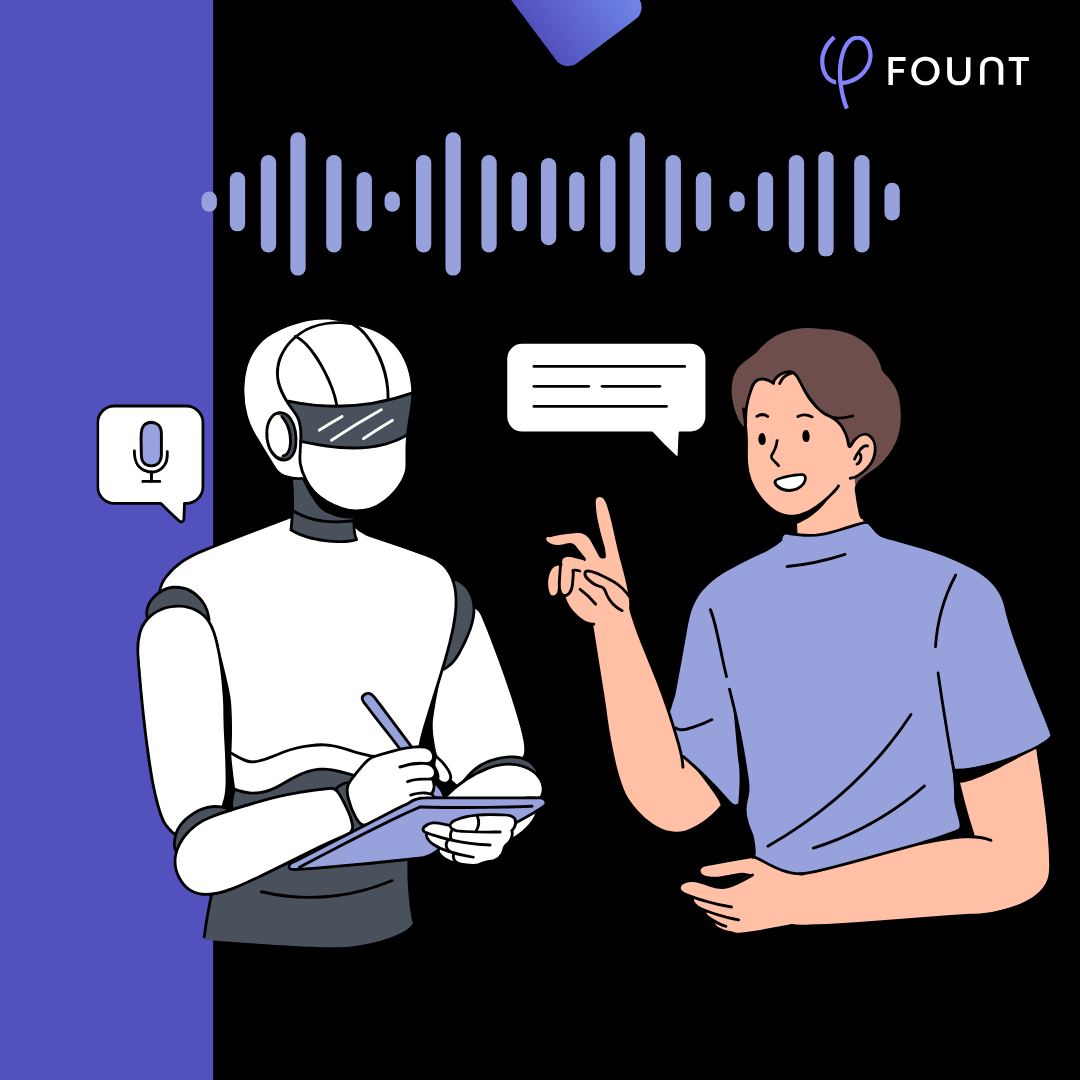
Insights
What to Do When Employees Resist AI Tools

Guest Post
Measure What Matters: Building a Common Data Model and Governing Structure to assess the impact of AI and Digital Transformation
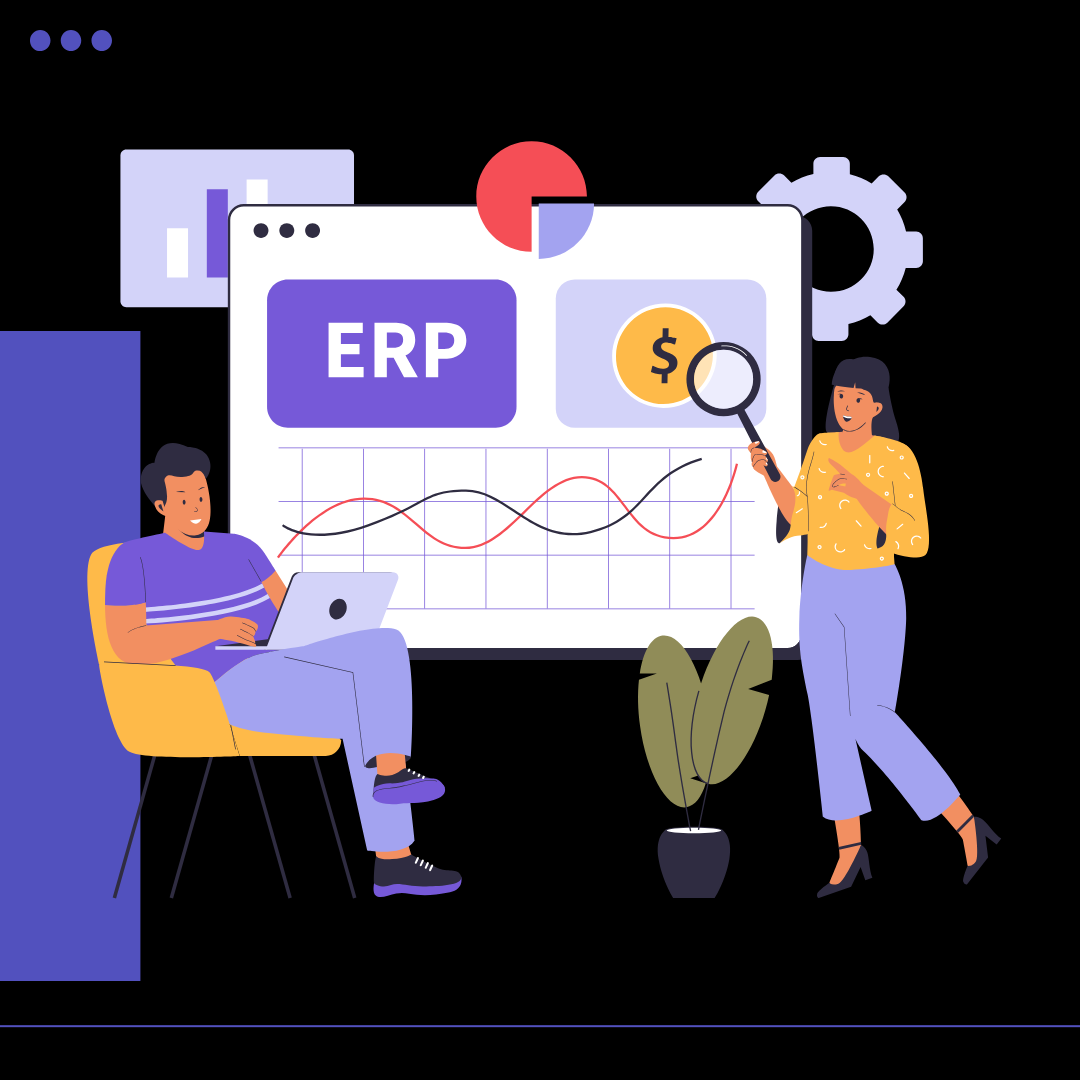
Insights
Nobody Wants to (Measure) Work Anymore: The Real Problem with AI Transformations
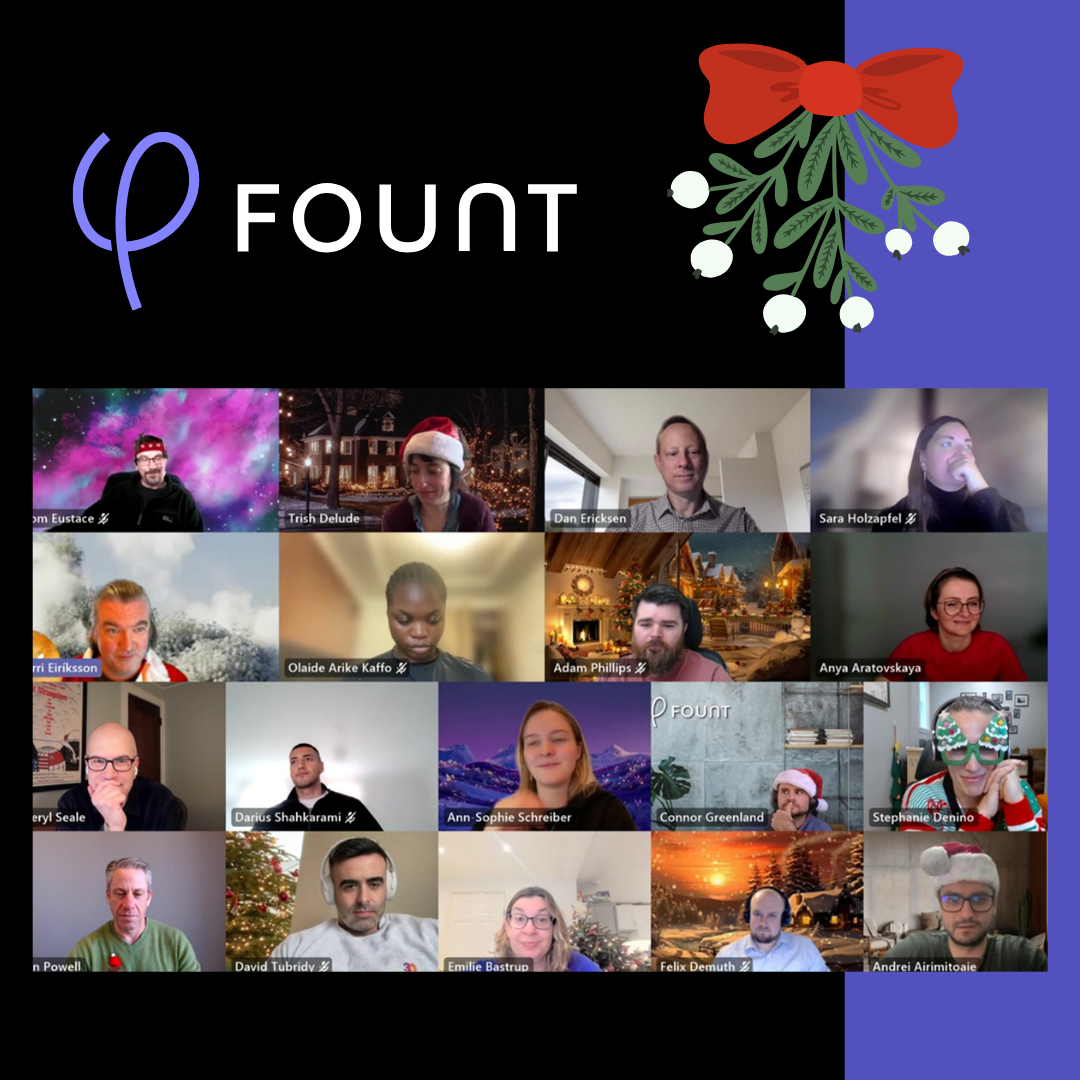
Insights
2024’s Most Read and Most Discussed
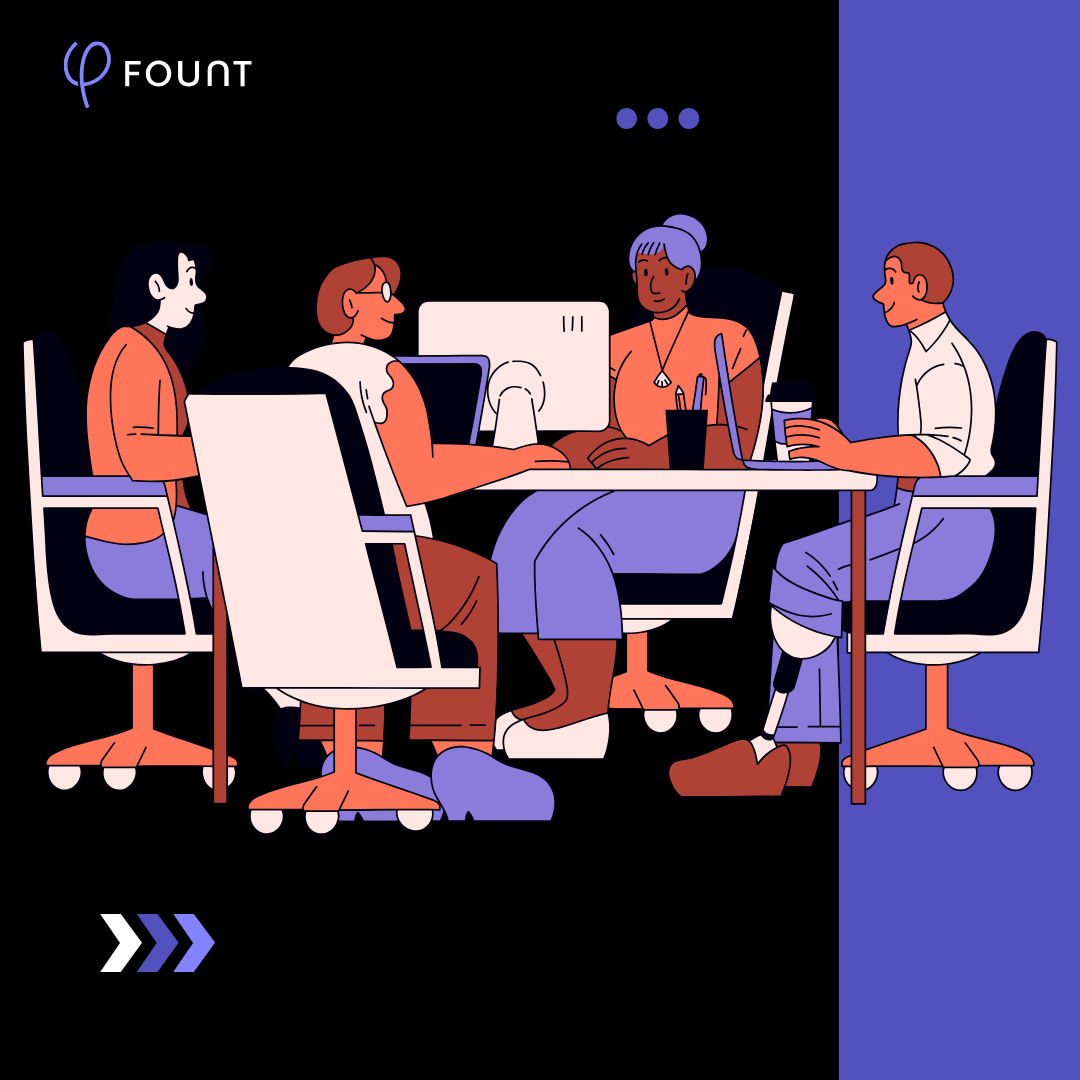
Insights
How to Prioritize AI Use Cases to Maximize ROI
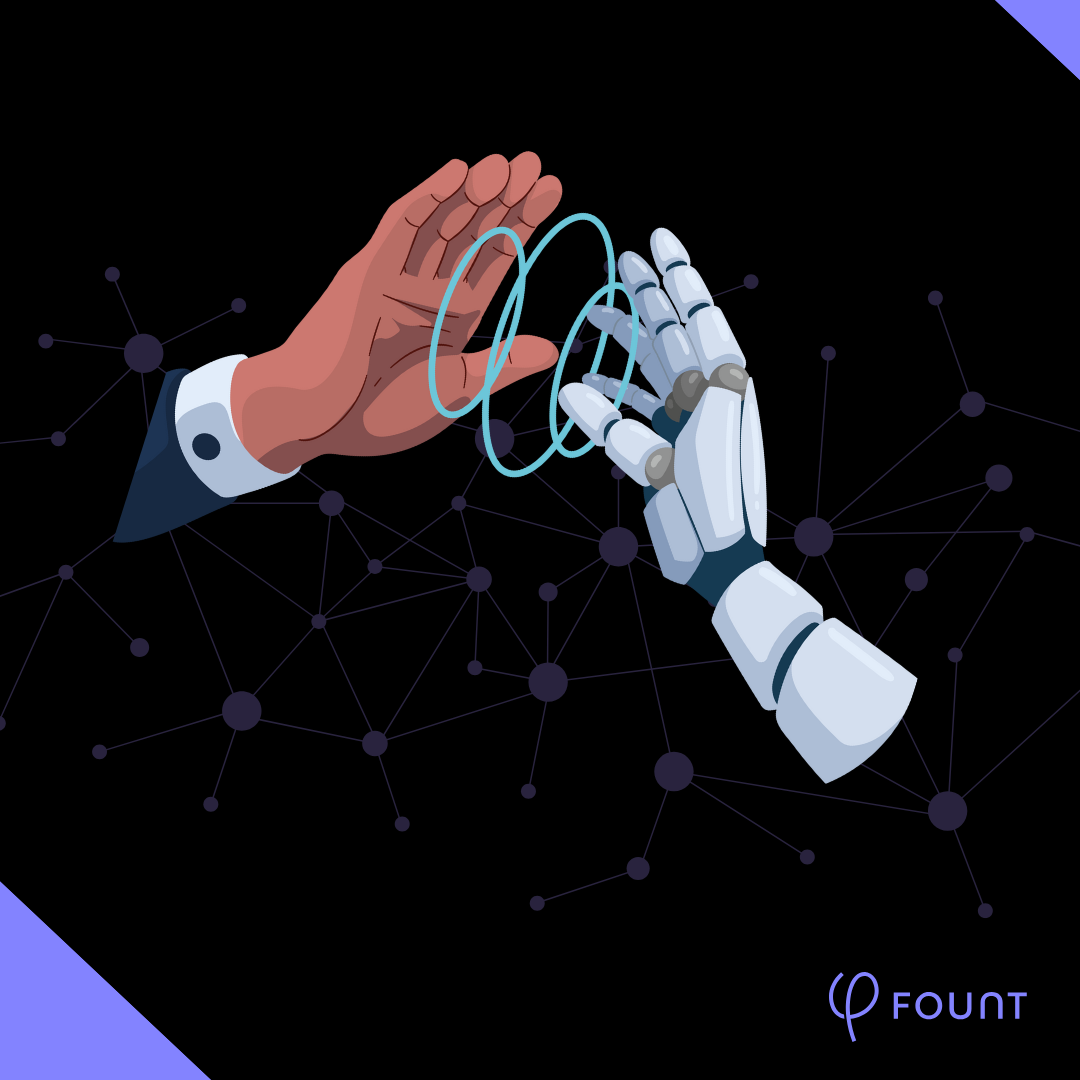
Insights
How to Assess the ROI of Current AI Initiatives & Prioritize Future Investments
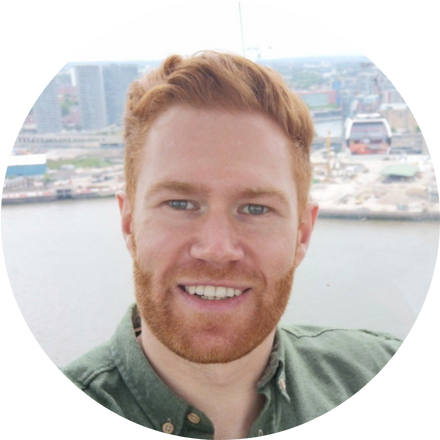
Guest Post
Key Insights from the Digital Transformation & AI & in Business Conference
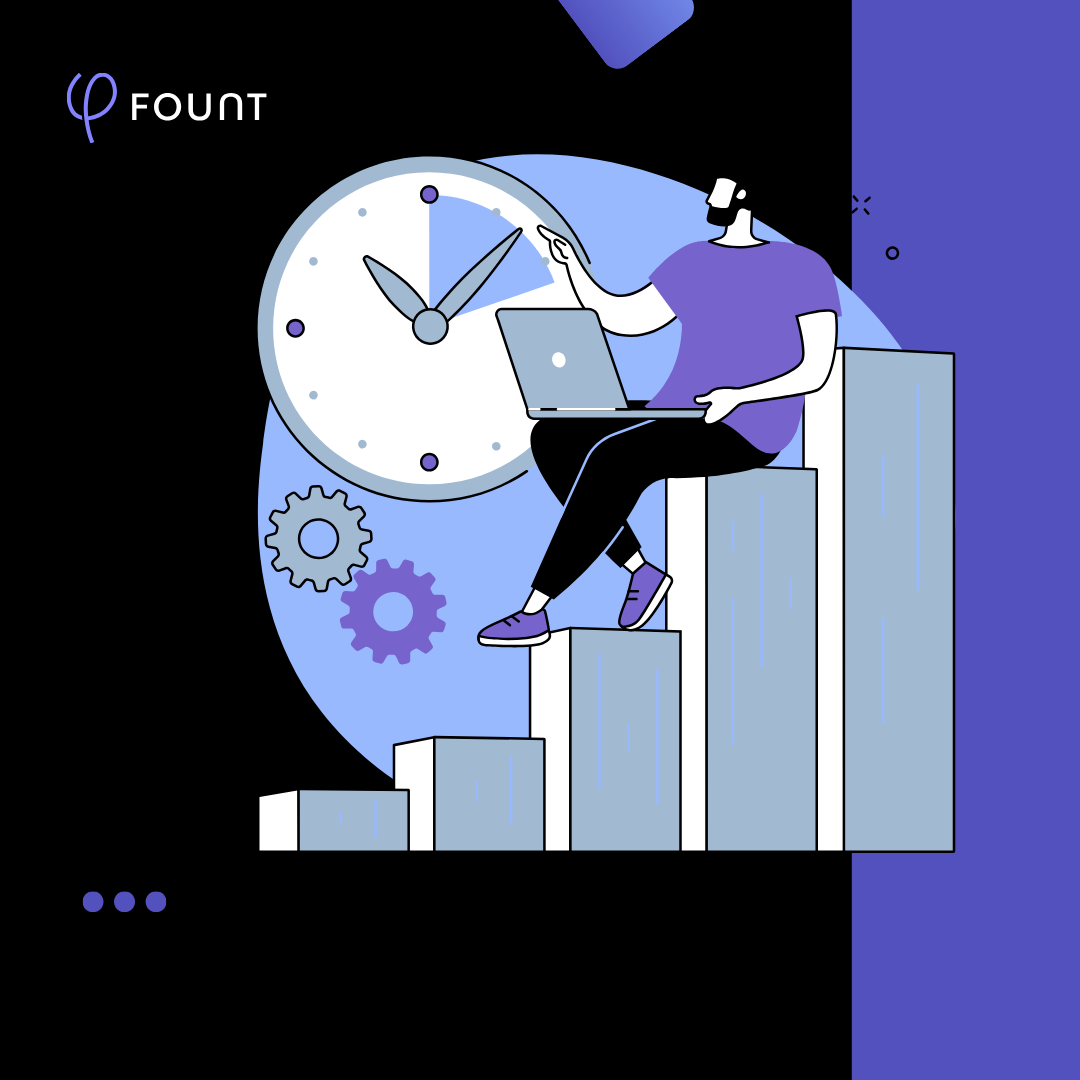
Insights
Digital Transformation KPIs: How to Measure the Success of Digital Transformation
